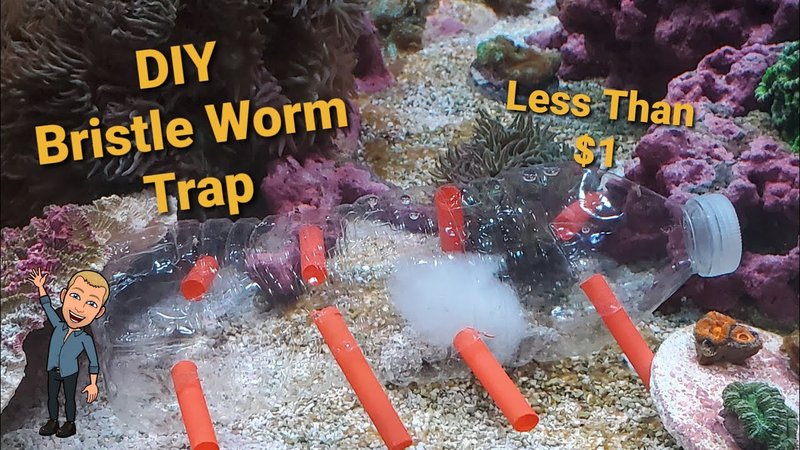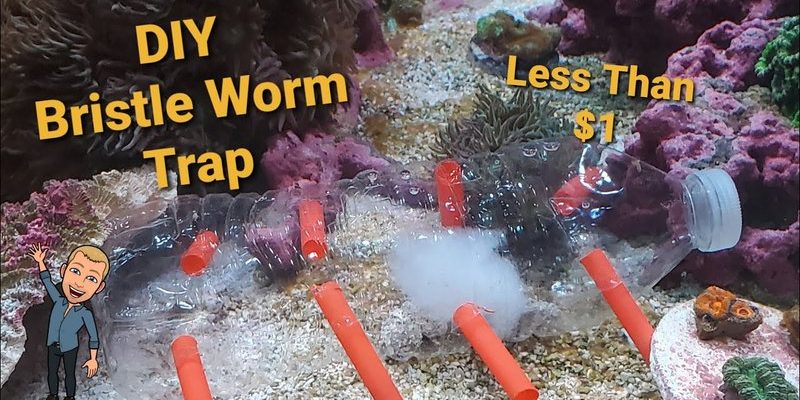
Imagine you’ve spent hours arranging your new aquarium, making sure every piece of coral and rock is perfectly placed. You’ve got the lighting just right, and you’re excited to introduce your fish. But then, you notice tiny, bristly creatures wiggling around the sand or rocks. It’s a bit of a party crasher moment, right? But don’t worry! With a little understanding and some proactive measures, you can handle a bristle worm outbreak smoothly.
What Are Bristle Worms?
Bristle worms are segmented worms that are part of the Polychaeta class. They’re typically found in saltwater environments, thriving in sandy or rocky substrates. These worms can be beneficial because they help break down organic material, but in large numbers, they can become a nuisance.
You might be wondering what exactly makes them so bothersome. Well, bristle worms have a knack for multiplying quickly, especially in newly established tanks. If your aquarium has a lot of uneaten food or decaying matter, these little guys can thrive and turn into a full-blown outbreak. More worms mean more competition for your fish and a potential imbalance in your tank’s ecosystem.
Why Do Bristle Worms Appear During Tank Setup?
When setting up a new aquarium, you’re essentially creating an ideal environment for all kinds of life—including bristle worms. These creatures can hitch a ride on live rock or sand. If you’re using live rock to help establish beneficial bacteria, it might be a bit of a double-edged sword.
Here’s the thing: during the cycling phase of your tank, when ammonia and nitrite levels spike, the availability of nutrients can lead to a bristle worm population boom. They’re like opportunistic guests at a buffet, showing up when the food is plentiful. If you’ve added any fish food or organic matter to kickstart your tank’s cycling process, that’s like throwing a party invitation to bristle worms.
Signs of a Bristle Worm Outbreak
Recognizing a bristle worm outbreak early can save you a lot of headaches. Look for the following signs that these little buggers are taking over:
- Visibility: If you see them crawling around the rocks or substrate, you might have a problem.
- Damage to Coral: They can sometimes nibble on soft coral or other invertebrates, so keep an eye on your tank’s inhabitants.
- Increased Waste: A spike in waste could suggest an overpopulation of bristle worms, as they can contribute to the bio-load.
If you spot one or more of these signs, it might be time to take action. Remember, not all bristle worms are harmful, but when their numbers swell, they can disrupt the balance of your tank.
How to Control Bristle Worm Populations
If you find yourself dealing with a bristle worm outbreak, don’t panic. Here are some effective strategies to manage them:
1. **Reduce Feeding:** Start by cutting back on feeding your fish. Uneaten food can fuel bristle worm growth. Aim to feed your fish only what they can consume in a few minutes.
2. **Regular Maintenance:** Perform regular water changes and clean the substrate to remove excess detritus. This not only helps control bristle worms but also boosts overall tank health.
3. **Use a Trap:** There are various traps designed specifically for bristle worms. These traps usually lure the worms in with bait, allowing you to remove them before they become a larger problem.
4. **Natural Predators:** Introducing certain fish or invertebrates that eat bristle worms can help keep their population in check. Some wrasses and certain types of shrimp are known to munch on these worms.
Prevention Tips for Future Setups
Now that you’ve dealt with an outbreak, you’ll want to avoid this issue in future tank setups. Here are some preventive measures to keep in mind:
– **Quarantine New Additions:** Always quarantine new live rock, sand, or any aquatic life before introducing them to your main tank. This reduces the risk of bringing in unwanted pests.
– **Monitor Nutrient Levels:** Regularly test your water parameters to keep ammonia, nitrite, and nitrate levels within a healthy range. This helps maintain a stable environment that is less conducive to bristle worm growth.
– **Keep Your Tank Clean:** Regularly clean the tank and remove any organic matter. A clean tank is less inviting for bristle worms and other pests.
Concluding Thoughts
Managing bristle worm outbreaks during tank setup can feel overwhelming, but it’s totally manageable with the right tools and knowledge. Just remember to keep an eye on your tank’s health, maintain cleanliness, and make smart choices about the creatures you introduce.
Bristle worms, while sometimes pesky, can play a role in your aquarium’s ecosystem. It’s all about balance. With a bit of work, you can create a thriving underwater world that not only looks great but also feels right for all its inhabitants. Happy aquarium keeping!

